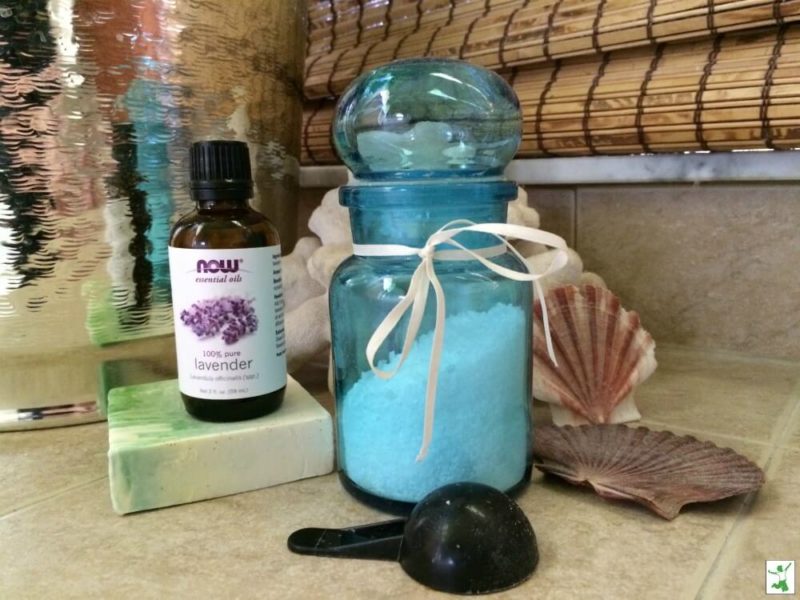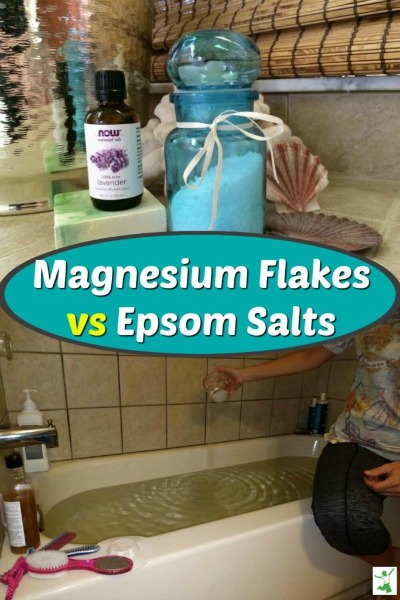
Magnesium flakes are a popular tool for helping to improve one’s nutritional status of this critical mineral. The question is, does it work?
Not only is magnesium deficiency rampant today, even when a person gets enough in the diet (more than two-thirds do not), he/she might not absorb it very well. (1)
This is why even supplementation might not resolve the problem especially for those with gastrointestinal disorders.
This situation makes for a huge risk to health. Magnesium affects so many bodily systems, particularly those of a cardiovascular nature.
The peer-reviewed British Medical Journal (BMJ) warns that subclinical magnesium deficiency (deficiency without observable symptoms) is a public health crisis. It is a major driver behind the epidemic of heart attacks and strokes. Part of the problem is that insufficient magnesium status makes Vitamin D metabolically ineffective. (2,3)
This is where magnesium flakes come in as an easy and affordable dose of prevention.
Magnesium Flakes for Resolving Deficiency
Magnesium chloride flakes are a naturally occurring compound. The chemical formula is MgCl2. Manufacturers make it using seawater or brine.
When MgCl2 flakes are added to a tub full of warm to hot water, elemental magnesium is released when the flakes dissolve. Once in this state, the skin can more readily absorb the magnesium.
Some people seem to absorb magnesium better via the skin than from diet!
This is the main benefit of using magnesium bath flakes as a topically-based remedy.
Hence, if you are low in this mineral or suspect you might be, a regular full body bath or foot soak using magnesium flakes is a very good idea. This brand of bath flakes is recommended by numerous experts in the study of magnesium for this purpose.
Since magnesium tends to make people sleepy, it’s a good idea to only do this before bed or at least a long nap!
How to Use Magnesium Chloride Flakes
When using MgCl2 for external resolution of magnesium deficiency, the soaking water is ideally in the range of 101-103 °F (39 °C).
In addition, it is best to shower and remove any body lotions, crèmes, and moisturizers before a magnesium flakes bath, as these products could form a skin barrier that might hinder the uptake of the magnesium.
3-6 cups of flakes work well for full-body soaks and 1-3 cups for foot soaks.
Each cup of magnesium flakes delivers approximately 15g of elemental magnesium into the soaking water for exposure to the skin.
If you are doing this for the first time, start on the low end and work up.
The rapid absorption of magnesium from a cleansing bath could easily send you to the toilet for many hours afterward because magnesium has a laxative effect.
Start slow!
Soak for 30 minutes or more. According to nutritional pioneer Hazel Parcells, it is not a good idea to top up the bath with more hot water after you’ve already started the clock. It’s not optimal to add cold water during the bath either if it is too hot.
Start with the warmest water you can comfortably stand for the entire bath, rinse with lukewarm water if desired, and then pat dry.
Frequency
Dr. Parcells recommends one restorative bath soak of any kind per day as a maximum.
A realistic goal for most people is to try and do a magnesium bath a few times a week for several months in a row to give your body the best shot at restoring optimal cellular magnesium levels.
However, if you are severely deficient, you may wish to bathe every day for a longer period of time.
Remember to start with small amounts (1 cup per tubful) and work up to a maximum of 6 cups per tubful after several weeks of use.
Tolerance of a rapid infusion of a nutrient varies between individuals. Hence, it is a good idea to discuss your intended bathing regimen with your practitioner before commencing.
Magnesium Baths How-to
Below is a one-minute video that shows you how to enjoy the benefits of improved magnesium status through magnesium flakes baths.
Magnesium Bath Flakes vs Epsom Salts
Regular Epsom salt baths are another excellent way to resolve magnesium deficiency.
Manufacturers of magnesium flakes will tell you that you need to use more Epsom salt (magnesium sulfate) as it excretes more quickly from the body compared to magnesium chloride flakes.
However, this appears to be true only if you are supplementing with magnesium chloride or magnesium sulfate orally.
When getting magnesium topically, the elemental magnesium that is released in a tubful of Epsom salt or magnesium flakes would be identical.
So, whether you soak in magnesium flakes or Epsom salts is a personal decision only. Try them both and choose based on what you prefer and what you experience. Some say that a soak in magnesium flakes is more intense. Personally, I don’t feel much difference.
A secondary benefit to soaking in a bathtub of Epsom salts is the elemental sulfur. The body also absorbs this mineral very well topically. Sulfur deficiency is another rampant deficiency in modern society.
Hence, an Epsom salt bath gives you a “two-for-one” nutritional punch. It helps resolve magnesium AND sulfur deficiency at the same time.
On the other hand, the chloride provided in a magnesium flakes bath is absorbed transdermally to help produce gastric acid and to stimulate starch-digesting enzymes.
Transdermal?
Magnesium oil is another option for benefiting from magnesium chloride transdermally.
Generally, magnesium chloride can be applied directly to the skin as a spray, gel, or lotion.
6 sprays of high-quality magnesium oil deliver approximately 100mg of elemental magnesium on the skin.
By comparison, one teaspoon of magnesium chloride gel contains approximately 490 mg of elemental magnesium, and the same amount of magnesium chloride lotion contains about 185 mg elemental magnesium.
Research suggests applying magnesium chloride directly to the skin is effective for resolving magnesium deficiency. However, for those with sensitive skin, magnesium chloride oil can cause irritation, itching, burning or even a rash. Slight tingling after application is normal.
Since the majority of the magnesium is absorbed within about 30 minutes, showering after this period of time works to prevent skin and residue issues for some people. (4)
If the magnesium oil proves problematic, magnesium gel or lotion that combines skin emollients like aloe vera with the therapeutic magnesium chloride may work better.
However, if applying directly to the skin in any form produces discomfort, it is best to stick with the magnesium bath flakes instead.
Note that some sources find that the improvement of serum magnesium levels from transdermal therapy to be inconclusive and in need of further study. (5)
You be the judge! Remember that many people who are magnesium deficient are asymptomatic, so blood tests would be the only way to concretely ensure that you are improving magnesium status either via diet, supplementation, or skin-based therapies.
Where to Buy Magnesium Flakes
My most trusted source for magnesium chloride flakes, oil, gel, and lotions is the same brand recommended by Dr. Mark Sircus, Ac. OMD, author of Transdermal Magnesium Therapy and Daniel Reid, author of The Tao of Health and The Tao of Detox.
According to these experts, Ancient Minerals delivers the fastest, most potent therapeutic benefits and is tested free of any toxic contaminant.

References
(1) How Many Americans are Magnesium Deficient?
(2) Subclinical magnesium deficiency: a principal driver of cardiovascular disease and a public health crisis
(3) Low magnesium levels make Vitamin D ineffective
(4) Magnesium Oil: Does it Really Improve Magnesium Absorption?
(5) Myth or Reality? Transdermal Magnesium








Info helped me very much …. thank you
Hey Sarah, Thanks so much for all the wonderful tips and information. You have been a very reliable resource. Thank YOU!
I do have some confusion in your article about the flakes giving you loose stools. Do you mean supplements or footbath/bath? I called the company and they don’t feel footbath/bath could do that nor does my naturopath Doc. Could you confirm that soaking with Mag flakes can cause loose stools? And your recommendation is to start slow to err on the caution ? Thank you for response ahead of time.
Any source of magnesium has the potential for a laxative effect whether form oral supplementation or via skin absorption. This is one of the most well known effects of improving magnesium status. I know a number of people who relieve constipation by taking regular Epsom salt or magnesium flakes baths. Certainly not everyone has this experience, but it is fairly common, which is being cautious and going slow in case you are one of those people is safest so you don’t end up on the toilet for an uncomfortably long period of time … like a few hours to a day or two 🙂
I’ve been using magnesium oil on and off for quite a few years. I didn’t like it much at first, because of the irritating sting I felt. Now it’s not irritating anymore. My skin has become much less sensitive to it. I feel a slight tingle, if anything. I make my own mg oil, same recipe someone else mentioned: boil 1 cup water, remove from heat and add 1 cup of flakes, stir until they’re all dissolved. Pour into a spray bottle.
Epsom salt is great for the garden while the chloride not so much,so for the outside bath,its back to epson salts..cheers
Used magnesium oil on plantar fascitis on my foot and it went away in 6 weeks as opposed to a year when it attacked my other foot. It can gave some incredible results with tendonitis.
As far as I have understood, you can’t have a (reliable) blood test for magnesium levels, as all there is is in your cells. Your body needs it so badly that it will not have any magnesium cirulating around, unless you have a surplus. Hope that helps!
This is how I understand it too. You can’t accurately test mag in humans because the body will pull it from bones and tissue to maintain homeostasis.
A homemade spray of mag oil isn’t super easy to make (1 cup flakes dissolved in 1 cup hot water) spritz on feet before bedtime for a wonderfully restorative sleep! Costs pennies to make compared to some oils selling for $20
Thanks for the great tip!
I’ve taken magnesium baths–most often with Dead Sea Salts–for many years before bed and have always slept great afterwards. However recently had a few experiences of bathing in Epsom salts and feeling incredibly energized afterwards and unable to sleep until the wee hours of the morning. My skin feels like a furnace, like I’m producing a ton of energy. It’s not a bad feeling except for being inconvenient at night. Any idea what could cause this?
Wow, that is an unusual reaction. Maybe switch to doing them during the midafternoon (schedule permitting) to make use of all that energy?
A feeling of warmth is commonly felt by people receiving intravenous magnesium. Maybe you are experiencing the same thing, now that you’ve switched from Dead Sea salts to a more concentrated magnesium. I can’t explain why people get this warm feeling, but many find it pleasant.
I was using magnesium oil, but the itchy skin was unbearable. A friend told me about mag-a-hol. Instead of diluting magnesium flakes in water, you use vodka. I only have minor itching now and use it every night before bed.
Haven’t heard of that! Thank you for sharing.
Great article. I been using mag spray for about 2 months now. Gone is neck pain, charle horses and craps any where. So easy to use. One in bedroom. One in the truck. Doesnt make me sleepy. In fact I’m trying as deo with ess oil added
Thanks for mentioning that it works well for some people as a deodorant as well. However, be careful as the underarm skin is a bit delicate so the potential for burning, itching is greater when used for that purpose.